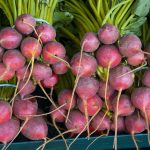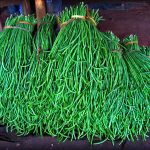Amaranth is a collective of annual or short lived perennial plants.
Their greens are a common leaf vegetable throughout the tropics and in many warm temperate regions.
So can guinea pigs eat amaranth and if they can how much of it can they eat?
In particular, its calcium, sugar, fat, phosphorus, and acidic content are most pertinent to guinea pigs.
Amaranth, uncooked
Nutritional value per 100 g (3.5 oz)
Energyt1,554 kJ (371 kcal)
Carbohydratest65.25 g
– Starcht57.27 g
– Sugarst1.69 g
– Dietary fibert6.7 g
Fatt7.02 g
– saturatedt1.459 g
– monounsaturatedt1.685 g
– polyunsaturatedt2.778 g
Proteint13.56 g
– Tryptophant0.181 g
– Threoninet0.558 g
– Isoleucinet0.582 g
– Leucinet0.879 g
– Lysinet0.747 g
– Methioninet0.226 g
– Cystinet0.191 g
– Phenylalaninet0.542 g
– Tyrosinet0.329 g
– Valinet0.679 g
– Argininet1.060 g
– Histidinet0.389 g
– Alaninet0.799 g
– Aspartic acidt1.261 g
– Glutamic acidt2.259 g
– Glycinet1.636 g
– Prolinet0.698 g
– Serinet1.148 g
Thiamine (vit. B1)t0.116 mg (10%)
Riboflavin (vit. B2)t0.2 mg (17%)
Niacin (vit. B3)t0.923 mg (6%)
Pantothenic acid (B5)t1.457 mg (29%)
Vitamin B6t0.591 mg (45%)
Folate (vit. B9)t82 μg (21%)
Vitamin Ct4.2 mg (5%)
Vitamin Et1.19 mg (8%)
Calciumt159 mg (16%)
Iront7.61 mg (59%)
Magnesiumt248 mg (70%)
Manganeset3.333 mg (159%)
Phosphorust557 mg (80%)
Potassiumt508 mg (11%)
Sodiumt4 mg (0%)
Zinct2.87 mg (30%)
(source: Wikipedia)
As you can see amaranth contains quite a bit of calcium, quite a bit of fat, but so much phosphorus in it.
It is definitely a food that guinea pigs should avoid at all costs.











